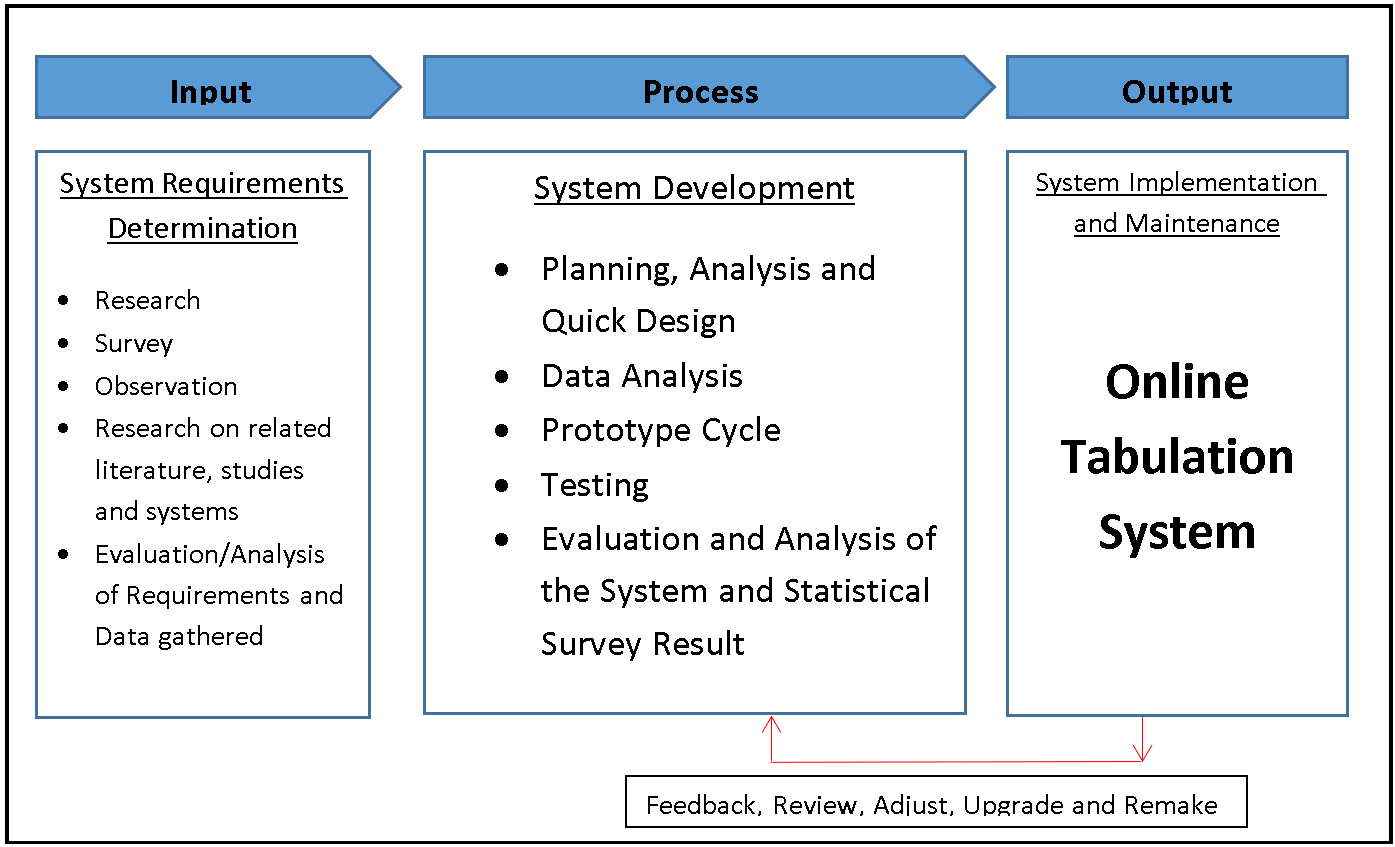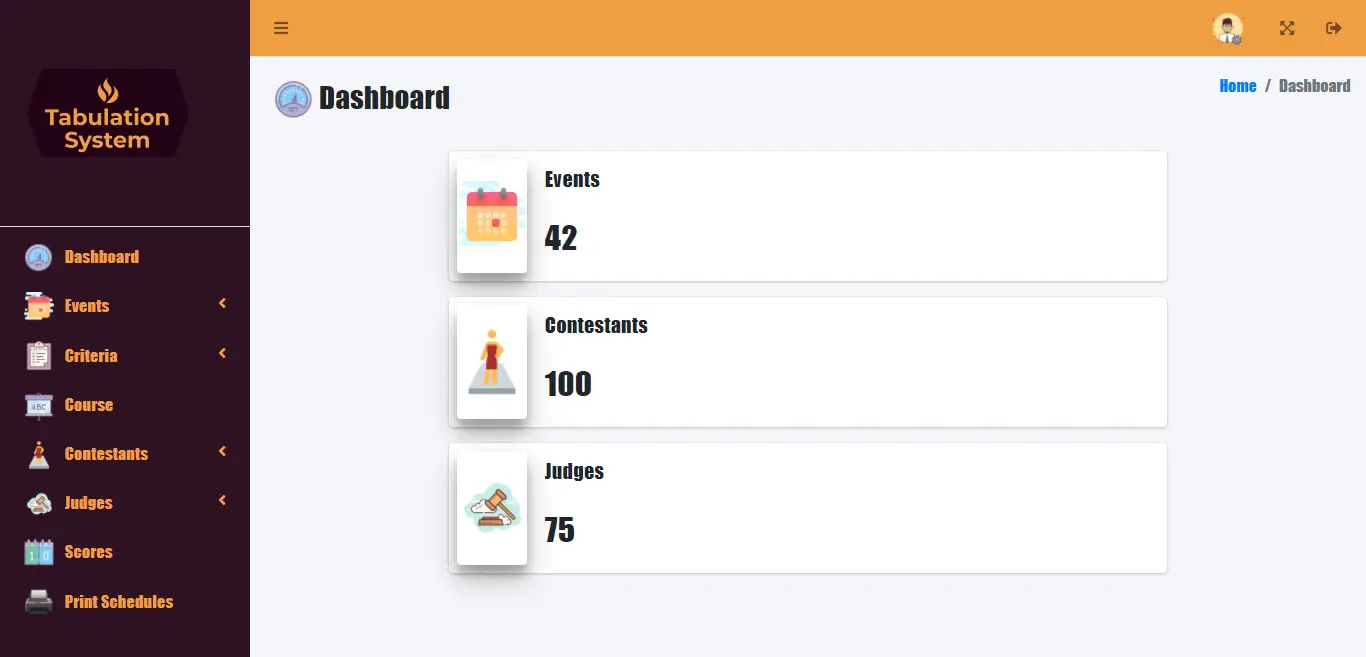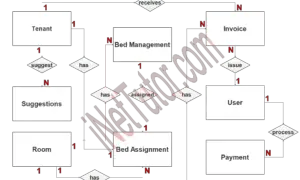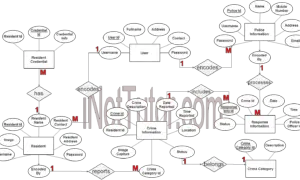Online Tabulation System Conceptual Framework
Welcome to our blog post on the conceptual framework of the Online Tabulation System! If you’re interested in understanding how this innovative system is designed and developed using the Input-Process-Output (IPO) model, you’ve come to the right place. The Online Tabulation System is a powerful tool that automates and streamlines the tabulation process, making it efficient, accurate, and user-friendly. In this article, we’ll explore the conceptual framework behind this system, which serves as the foundation for its successful implementation. From the initial input phase to the final output phase, we’ll delve into each stage and explain how it contributes to the development and functionality of the Online Tabulation System. So, whether you’re a student, an educator, or a technology enthusiast, join us on this journey as we unravel the key components of the conceptual framework and shed light on how it drives the effectiveness and reliability of the Online Tabulation System.
About the Project
Table of Contents
Events or competitions are very common especially in school settings. In every competition, the tabulation process is critical. Conventionally, tabulators manually calculate the scores and record it in a piece of paper which is prone to errors. Manual tabulation of scores also requires valuable time and effort from the tabulators. Also, tabulation of scores may not be accurate or records of the tabulated scores may misplace due to human errors. The manual process is not ideal for it does not produce a highly accurate and reliable result of the contest. The capstone project entitled “Online Tabulation System” will allow automated tabulation of scores during events or competitions. The system will allow the judges to electronically input their scores and the system will automatically tabulate the scores and provide results of the contest.
Objectives of the Study
The general objective of the research study on the Online Tabulation System is to develop a web-based platform that automates and streamlines the process of tabulating and analyzing data from various sources. The system aims to provide an efficient and accurate method of data collection, entry, and analysis for organizations and institutions. By leveraging the power of technology, the Online Tabulation System aims to enhance data management, improve decision-making processes, and ultimately contribute to more effective and data-driven outcomes in various domains such as education, market research, and survey analysis.
Specifically, it aims:
- To develop a system that will allow automated process of tabulating scores.
- To design a tabulation system that is capable of managing school events and competitions.
- The system will also serve as a repository of all information about the contest.
- To design a tabulation system that is easy to use and have a user-friendly interface.
- The system will make tabulation process easy, fast, accurate and convenient.
What is a Conceptual Framework?
A conceptual framework is a theoretical framework that provides a foundation for understanding, organizing, and guiding the development of a project or study. In the context of a capstone project, a conceptual framework serves as a conceptual structure that helps researchers define the scope of their study, identify relevant variables, and establish the relationships between them.
The purpose of a conceptual framework in a capstone project, such as the development of an Online Tabulation System, is to provide a clear and coherent structure for the project. It helps the researchers to define the objectives, research questions, and hypotheses, and guides the selection and organization of data and information.
In the development of an Online Tabulation System, a conceptual framework can play a crucial role. It helps in identifying the key components and functionalities of the system, such as data collection methods, data storage and management, data analysis techniques, and reporting mechanisms. The conceptual framework provides a roadmap for designing and implementing the system, ensuring that it aligns with the goals and requirements of the project. It also helps in identifying potential challenges, risks, and opportunities, enabling researchers to make informed decisions and modifications during the development process. Ultimately, a well-defined conceptual framework contributes to the successful development of the Online Tabulation System by providing a solid foundation and guiding the project towards its objectives.
Conceptual Framework Diagram

The image above depicts the project’s conceptual framework, entitled Online Tabulation System. It is based on the input, process, and output (IPO) model.
Input
The project will begin by evaluating the present process, which will lead to the stage of doing research, survey and observation. The researchers will also need to compile relevant papers and systems to use as a guide for the project’s development. After all such process, the researchers will evaluate and analyze the requirements and data gathered.
Process
The researchers will select and choose the optimum software development life cycle model for the project in this section.
Planning, Analysis and Quick Design
During Analysis and Quick Design, the researchers did a personal interview with the respondents and the chosen client where the study was conducted. The respondents were given the chance to suggest how the system will be designed. After conducting the data gathering, the researchers made an initial design for the proposed system.
Data analysis
Consultation is used to gather requirements from end users and generate ideas. We also distributed a survey questionnaire that was authorized by three experts (IT Expert, English Grammarian, and Researcher). And these questionnaires functioned as our data gathering tool, measuring the performance of the manual system that served as the foundation for the development of our proposed system.
Prototype
The prototype and planned system features are developed at this phase. A concrete understanding of how the system will function is also created. We identify all of the necessary system inputs and outputs, as well as the design of data, processes, and interfaces, in this part.

Testing
In this phase, the researcher performed series of testing to check for any possible problems may arise during implementation and operation of the software and if the specification has been met.
Evaluation and Analysis of the System and Statistical Survey Result
This will include the feed backing of the proposed system after it will be implemented and had undergone testing by three Experts. It will also inform the researchers and the developer if there are any bugs, suggestion and if the system’s functionality will work well.
This will discuss the implementation of the proposed system wherein Three (3) Experts will evaluate the proposed system. This will also discuss if the recommended functions and suggestion are met.
Output
The output phase of the Online Tabulation System involves the system implementation, installation in the live environment, and subsequent system updates or upgrades. This phase is a critical step in bringing the system from the development stage to its operational state.
During the system implementation, the developed Online Tabulation System is deployed to the live environment. This includes setting up the necessary hardware and software infrastructure, configuring the system according to the specific requirements of the organization or institution, and ensuring its compatibility with the existing systems and networks. The installation process may involve data migration, user training, and the establishment of security measures to protect sensitive data.
Once the system is implemented and operational, regular system updates or upgrades are essential to maintain its performance, security, and functionality. System updates involve applying patches, bug fixes, and enhancements to address any identified issues or improve the system’s features. System upgrades, on the other hand, involve introducing major changes or introducing new functionalities to meet evolving user needs or technological advancements.
System updates and upgrades are crucial for the long-term success and sustainability of the Online Tabulation System. They help to ensure that the system remains up-to-date, efficient, and secure. Regular updates and upgrades also provide opportunities for incorporating user feedback, addressing user requirements, and enhancing the overall user experience.
Summary
In our blog post, we explore the conceptual framework of the Online Tabulation System, a powerful tool that automates and streamlines the tabulation process. We discuss how the Input-Process-Output (IPO) model serves as the foundation for its development. The input phase involves activities such as research, survey, observation, and analysis of requirements and data gathered. These activities ensure that the system meets the needs of users and stakeholders. The process phase focuses on designing and developing the system, including the integration of technologies like PHP and MySQL. Finally, the output phase covers system implementation, installation in the live environment, and ongoing updates and upgrades.
We emphasize the importance of the conceptual framework in driving the successful implementation of the Online Tabulation System. It helps in defining project objectives, conducting thorough research, gathering relevant data, and analyzing requirements. By following the IPO model, the system can be developed and refined to meet the specific needs of tabulation processes. The blog post provides insights into each stage of the conceptual framework, showcasing how it contributes to the system’s effectiveness, accuracy, and efficiency.
Readers are also interested in:
- List of Completed Capstone Projects with Source code
- Best 75 List of IT Capstone Project for Agriculture
- New and Unique Thesis and Capstone Project Ideas for Information Technology
You may visit our Facebook page for more information, inquiries, and comments. Please subscribe also to our YouTube Channel to receive free capstone projects resources and computer programming tutorials.
Hire our team to do the project.

